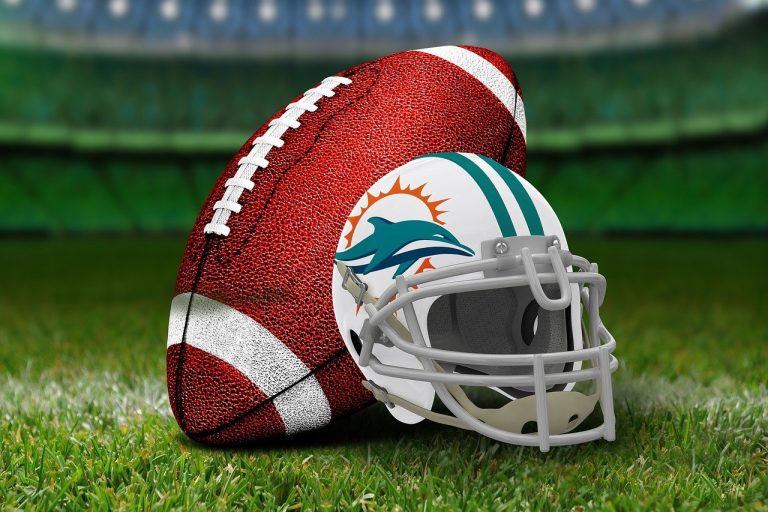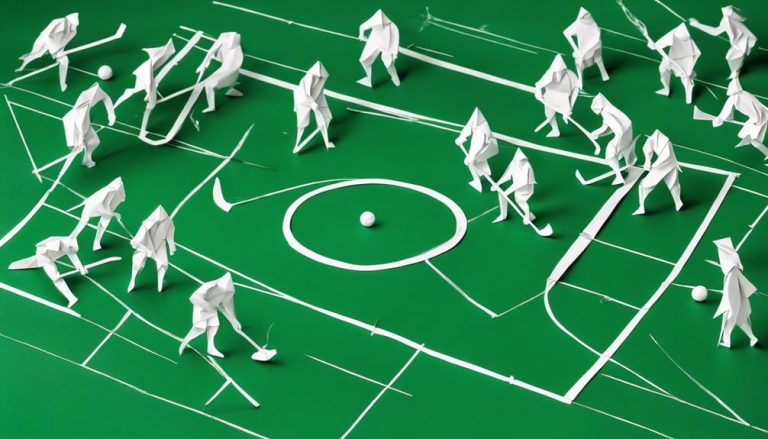General Rules of Playing Walking Football
Are you ready to embark on a new sporting adventure that combines camaraderie, skill, and a lot of fun? Look no further than walking football, a unique and exhilarating sport that is capturing the hearts of people of all ages. Whether you are a seasoned athlete or just starting to explore the world of sports, walking football offers a fantastic opportunity to stay active, showcase your abilities, and forge lasting friendships.

In this article, we will take a closer look at the general rules of walking football. From the essential equipment you’ll need to the scoring system, we will guide you through the ins and outs of this captivating sport. Whether you’re a player, coach, or simply a curious spectator, understanding the rules of the game will enhance your appreciation and enjoyment of walking football.
Walking football is gaining popularity worldwide as a modified version of the beautiful game. It is designed to accommodate players of all ages and abilities, placing a strong emphasis on inclusivity and fair play. The game is played on a smaller pitch, with teams consisting of five to seven players. The key difference lies in the rule that players must always have one foot on the ground, eliminating the possibility of running or jogging. This unique feature ensures that the game remains accessible to individuals of varying fitness levels.
As we dive into the rules of walking football, you’ll discover the nuances that make this sport both challenging and enjoyable. From understanding the role of the goalkeeper to mastering the art of passing, each aspect of the game contributes to the overall strategy and excitement on the field.
So, lace up your sneakers, grab a ball, and get ready to immerse yourself in the fantastic world of walking football. Let’s kick off this incredible journey together!
Equipment and Attire
To ensure a safe and enjoyable game, always wear appropriate equipment and attire when playing walking football. This includes selecting the right type of footwear and wearing protective gear.
Different types of footwear can greatly impact your performance on the field. Opt for shoes with flat soles or turf shoes that provide good traction and stability. Avoid wearing running shoes with thick cushioning as they may cause instability and increase the risk of slipping or tripping.
It’s also important to wear protective gear to prevent injuries. While walking football is a low-contact sport, accidents can still happen. Wearing shin guards is highly recommended to protect your lower legs from kicks and collisions. Additionally, consider wearing knee braces or supports if you have any pre-existing knee conditions or are prone to knee injuries.
Don’t forget to wear comfortable and breathable clothing that allows for ease of movement. Opt for moisture-wicking fabrics to keep you cool and dry during the game.
Pitch and Goal Size
When playing walking football, the size of the pitch and goals is an important consideration. The pitch condition can greatly impact the overall experience and safety of the game. A well-maintained pitch ensures a smooth and even surface, reducing the risk of slips and falls. It’s recommended to play on a grass or artificial turf pitch that’s well-mowed and free of any debris or obstructions. Additionally, the size of the pitch should be appropriate for walking football, typically ranging from 30 to 40 meters in length and 20 to 30 meters in width.
Goalkeepers play a crucial role in walking football, and the size of the goals is an important factor to consider. The goals should be smaller compared to traditional football, typically measuring around 2.5 meters in width and 1 meter in height. This smaller size allows goalkeepers to cover the goal effectively and enhances their involvement in the game. It also encourages precise and accurate shooting, as players need to be more strategic to score.
To ensure fairness and maintain a level playing field, it’s essential to adhere to the recommended pitch and goal sizes. Playing on a pitch of appropriate dimensions enhances the flow of the game, promotes better ball control, and reduces the risk of collisions. Similarly, using goals of the correct size allows goalkeepers to fulfill their role effectively and keeps the game balanced.
Walking Speed and Movement
Maintaining a controlled walking speed and fluid movement is crucial in playing walking football. In this style of play, it’s important to focus on your walking technique and positioning strategies to enhance your performance on the pitch.
When it comes to walking technique, it’s essential to find a comfortable rhythm that allows you to move smoothly and efficiently. Take smaller steps and focus on maintaining balance and stability. Keep your body upright and avoid leaning forward or backward, as this can affect your speed and control. By keeping your strides short and controlled, you’ll be able to maneuver around the pitch with ease.
Positioning strategies are also vital in walking football. Unlike traditional football, where speed and agility play a significant role, walking football relies more on positioning and anticipation. Pay attention to the movements of your teammates and opponents, and position yourself accordingly. By being in the right place at the right time, you can make effective passes, intercept passes, and create scoring opportunities.
Remember, walking football is a team sport, and effective communication is essential. Talk to your teammates, provide them with support, and coordinate your movements on the pitch. By working together and understanding each other’s strengths and weaknesses, you can create a cohesive and successful team.
Contact and Challenges
When it comes to contact and challenges in walking football, it’s important to understand the level of physicality allowed.
While the game promotes a non-contact approach, some incidental contact may occur.
It’s crucial to practice safety measures, such as avoiding tackles or aggressive challenges, to prevent injuries and maintain the spirit of the game.
Physicality in Walking Football
During a game of walking football, you’re allowed light contact with other players, emphasizing safety and fair play. While physicality is a key aspect of the game, injury prevention is of utmost importance.
It’s crucial to maintain proper player positioning to minimize the risk of collisions and injuries. Stay aware of your surroundings and be mindful of the position of other players on the field. Keep a safe distance to avoid accidental collisions and give yourself enough time to react to any sudden movements.
Safety Measures for Challenges
To ensure safety during challenges in walking football, consistently prioritize fair play and avoid excessive force or aggressive actions towards other players. Safety measures are crucial in preventing injuries and promoting a positive playing experience for everyone involved. By utilizing safe techniques and practicing injury prevention, you can minimize the risk of accidents and maintain a welcoming environment on the field.
Here are some important safety measures to keep in mind during challenges in walking football:
| Safe Techniques | Injury Prevention |
|---|---|
| Use controlled movements | Warm up and stretch beforehand |
| Maintain proper body balance | Wear appropriate footwear |
| Keep a safe distance | Communicate with teammates |
| Focus on the ball | Stay hydrated |
Offside and Out of Bounds
To understand the rules of offside and out of bounds in walking football, you need to be aware of a few key points. Here are some important things to keep in mind:
-
Offside interpretation: In walking football, the offside rule is slightly different from traditional football. Instead of the usual interpretation where a player is offside if they’re closer to the goal line than both the ball and the second-to-last defender, in walking football, a player is offside if they’re closer to the goal line than only the second-to-last defender. This rule is in place to accommodate the slower pace of the game and ensure fair play.
-
Boundary markings: Just like in regular football, walking football also has boundary markings to determine when the ball is out of bounds. These markings are usually indicated by lines on the ground or by cones placed around the field. It’s important to be aware of these boundaries and make sure the ball stays within them during the game.
-
Out of bounds: If the ball goes out of bounds during play, the opposing team will be awarded a throw-in. This means that the team who didn’t touch the ball last before it went out of bounds will have the opportunity to restart the game by throwing the ball back into play.
-
Respect the rules: Offside and out of bounds rules are put in place to ensure fair and enjoyable gameplay. It’s important to respect these rules and play within the boundaries of the game. By doing so, you contribute to the overall spirit of sportsmanship and camaraderie that walking football aims to foster.
Scoring and Game Duration
Now let’s talk about the points in walking football.
Scoring techniques and strategies play a crucial role in this game.
You’ll also need to be aware of the time limits and breaks, as well as the penalty shootout rules.
Understanding these aspects will help you maximize your scoring opportunities and navigate the game effectively.
Scoring Techniques and Strategies
During a walking football game, you score points by kicking the ball into the opposing team’s goal. To increase your chances of scoring, here are some techniques and strategies you can use:
-
Precision shooting: Focus on accuracy rather than power when shooting. Aim for the corners of the goal to make it harder for the goalkeeper to save.
-
Quick shots: Take advantage of any openings or gaps in the defense by shooting the ball swiftly. This catches the goalkeeper off guard and increases the likelihood of scoring.
-
Teamwork: Coordinate with your teammates to create scoring opportunities. Pass the ball to players in better positions or set up plays to confuse the opposing team’s defense.
-
Movement off the ball: Constantly move and position yourself to receive passes and create space for yourself. This makes it easier for your teammates to assist you in scoring.
Time Limits and Breaks
When playing walking football, you can adhere to time limits and breaks to ensure fair scoring and game duration. Timekeeping and referee control play a crucial role in maintaining the flow of the game and ensuring that all players have an equal opportunity to participate.
In walking football, matches are typically played in halves, ranging from 20 to 30 minutes each. This allows for sufficient time for players to showcase their skills and strategies without overexerting themselves. Additionally, substitutions are allowed and can be made at any time during the game. This ensures that players can take breaks and recover their energy if needed.
Referees play a pivotal role in monitoring the time limits and managing substitutions, ensuring that the game runs smoothly and fairly for all players involved.
Penalty Shootout Rules
To understand the penalty shootout rules in walking football, familiarize yourself with the scoring and game duration guidelines. Here are some key points to keep in mind:
-
Scoring: During a penalty shootout in walking football, each team takes turns shooting at the goal. A successful shot earns the team one point. The team with the most points at the end of the shootout wins.
-
Game Duration: Penalty shootouts in walking football usually consist of a predetermined number of rounds or shots per team. This ensures fairness and allows for a quick resolution. The number of rounds can vary depending on the competition or agreement between teams.
-
Penalty Shootout Techniques: Players often employ various techniques to increase their chances of scoring during a penalty shootout. Some popular techniques include the stutter step, side foot placement, and aiming for the corners of the goal.
-
Penalty Shootout Strategies: Teams strategize by selecting their best penalty takers and goalkeepers, analyzing their opponents’ tendencies, and practicing penalty shootout scenarios during training sessions.
Understanding these penalty shootout rules, techniques, and strategies can help you become a valuable asset to your walking football team and increase your chances of success.
Frequently Asked Questions
Are There Any Restrictions on the Types of Shoes That Can Be Worn for Walking Football?
When it comes to playing walking football, there are certain rules and guidelines that you need to follow.
One important aspect is the dress code, which includes the types of shoes that can be worn. In terms of shoe requirements, it’s recommended to wear comfortable and supportive footwear that allows for easy movement on the field.
While there mightn’t be strict restrictions, it’s important to choose shoes that provide stability and reduce the risk of injury during the game.
Can Players Wear Jewelry, Such as Necklaces or Earrings, During a Walking Football Game?
During a walking football game, it’s generally recommended to avoid wearing jewelry such as necklaces or earrings. Although there may not be specific rules against it, wearing jewelry can pose safety concerns and potentially impact gameplay.
Jewelry can become tangled or caught on other players, leading to accidents or injuries. To ensure a safe and enjoyable game for everyone, it’s best to remove any jewelry before participating in walking football.
Is There a Minimum or Maximum Number of Players Required for a Walking Football Match?
There is no specific minimum or maximum number of players required for a walking football match. The number of players can vary depending on the size of the field and the preferences of the teams involved.
However, it’s generally recommended to have at least four players on each team to ensure a competitive and enjoyable game. Having more players can also increase the level of engagement and teamwork, which are important benefits of playing walking football.
Are There Any Age Restrictions for Participating in Walking Football?
Are you wondering if there are any age restrictions for participating in walking football?
Well, I’ve got good news for you!
Walking football is a sport that welcomes people of all ages, especially older adults.
It offers numerous benefits for older individuals, such as improved cardiovascular health, increased social interaction, and enhanced mental well-being.
Are There Any Penalties or Consequences for Intentionally Running or Jogging During a Walking Football Game?
If you intentionally run or jog during a walking football game, there may be penalties or consequences. Running or jogging goes against the spirit of the game, which emphasizes walking and low-impact movements.
To prevent this, it’s important to stay mindful of your pace and focus on walking. Remember, the goal is to enjoy the game and promote inclusivity for all players.






